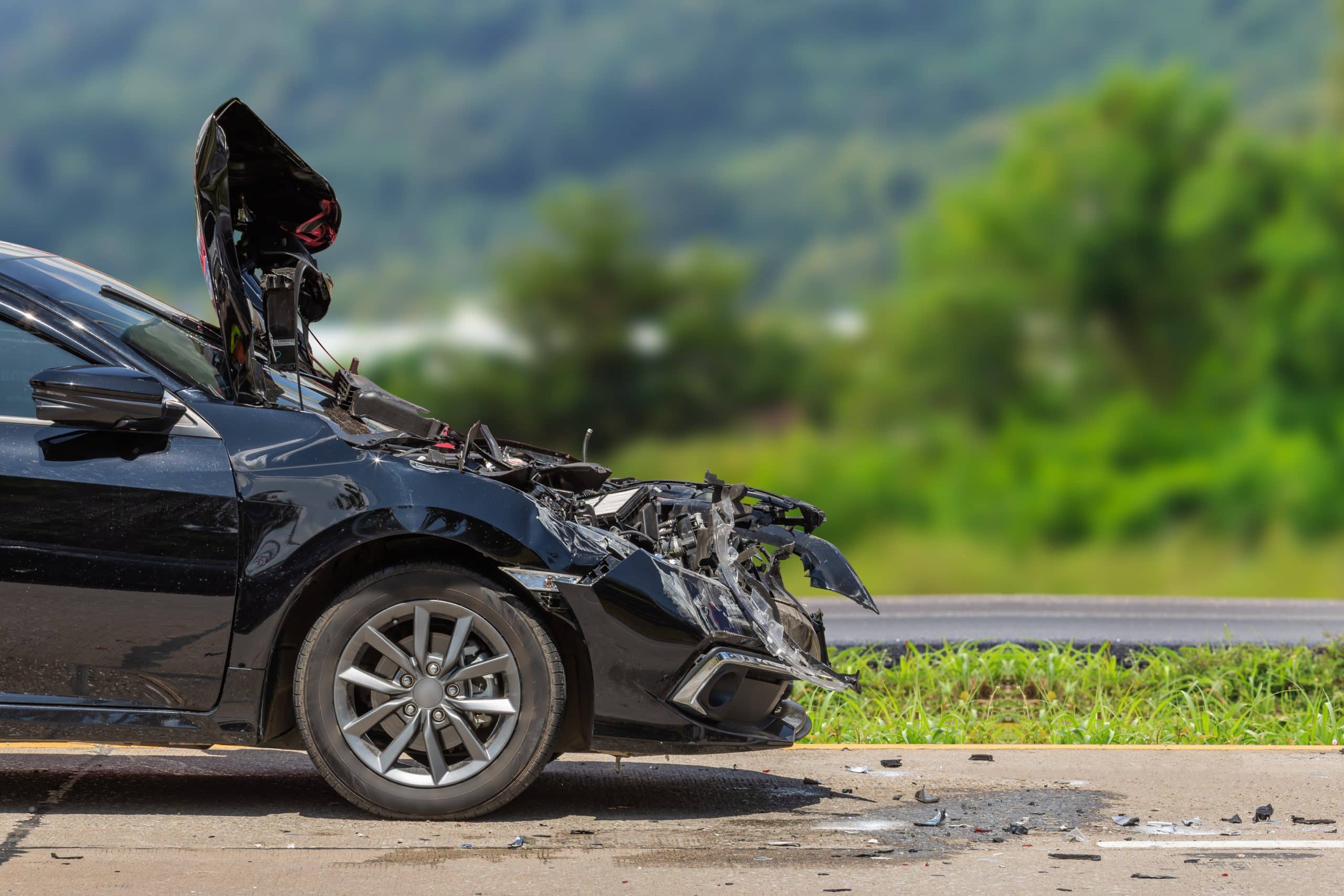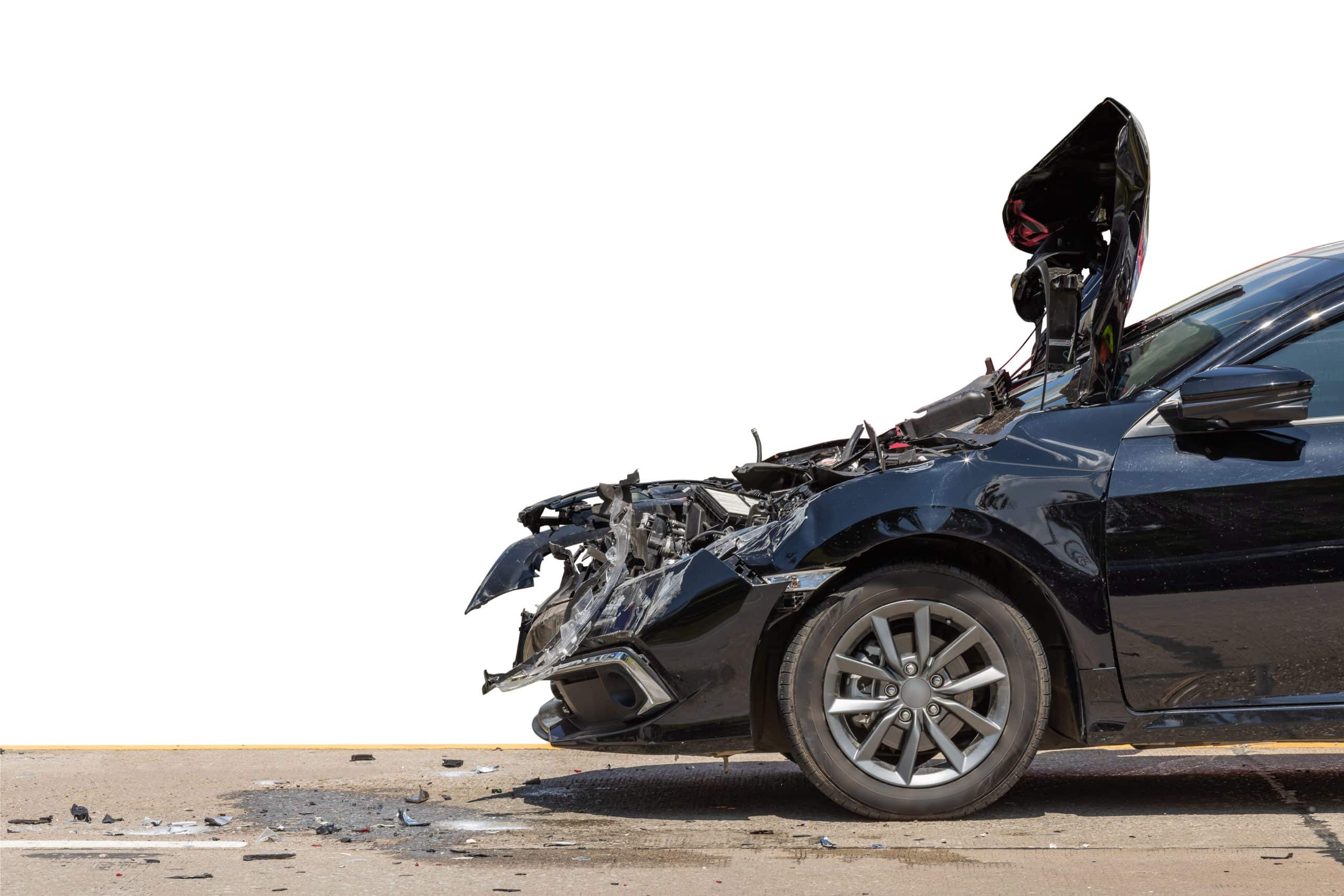In the heart of America lies a state shrouded in danger and risk, where the roads have become a treacherous terrain for drivers. Welcome to Oklahoma, a state that has silently climbed the ranks to become one of the top 10 most dangerous states for drivers in the country. With its picturesque landscapes and charming towns, it’s easy to overlook the hidden perils that plague Oklahoma’s roads.
From reckless driving to poor infrastructure and an alarming number of drunk drivers, the dangers seem to lurk around every corner. In this article, we will delve into Oklahoma’s journey, exploring the factors that have contributed to its dubious distinction. With an in-depth analysis of accident statistics, expert opinions, and insights from the local community, we will uncover the underlying issues and shed light on the steps being taken to navigate this rising tide of risk.
Join us on this eye-opening journey through the perils of Oklahoma’s roads, as we navigate the troubling landscape and seek to understand what can be done to make them safer for everyone.
Factors Contributing to Oklahoma’s High Accident Rates
Oklahoma’s high accident rates can be attributed to a combination of factors that contribute to the state’s dangerous roads. One major factor is the prevalence of reckless driving behaviors. Speeding, distracted driving, and aggressive maneuvers are all too common on Oklahoma’s highways and city streets. Additionally, the lack of driver education and awareness programs has perpetuated these dangerous behaviors.
Furthermore, poor road conditions and infrastructure play a significant role in the state’s high accident rates. Potholes, inadequate signage, and poorly designed intersections contribute to a higher risk of accidents. The state’s expansive rural areas also present challenges in terms of road maintenance and emergency response times.

Comparison of Oklahoma’s Driving Statistics with Other States
To gain a better understanding of Oklahoma’s driving risks, let’s compare the state’s driving statistics with other states in the country. Despite its relatively small population, Oklahoma consistently ranks among the top states for traffic fatalities and injuries. This alarming trend raises questions about the underlying factors that contribute to the state’s high accident rates.
When comparing Oklahoma’s driving statistics to other states with similar demographics and geographical characteristics, it becomes evident that the state’s road safety measures fall short. Whether it’s the lack of effective legislation, insufficient law enforcement resources, or inadequate funding for infrastructure improvements, Oklahoma trails behind in ensuring the safety of its drivers and passengers.
The Role of Infrastructure in Oklahoma’s Driving Risks
Infrastructure plays a crucial role in determining a state’s driving risks, and Oklahoma is no exception. The state’s aging infrastructure, coupled with rapid population growth, has resulted in a strain on the roadways. Insufficient investment in maintenance and upgrades has led to a deteriorating transportation system that poses significant risks to drivers.
Moreover, Oklahoma’s rural areas face unique challenges when it comes to infrastructure. Limited funding and sparse population make it difficult to prioritize road improvements and implement safety measures effectively. As a result, drivers in these areas are more susceptible to accidents due to inadequate road conditions and longer emergency response times.
Law Enforcement Efforts to Improve Road Safety in Oklahoma
Law enforcement agencies in Oklahoma have recognized the need to address the state’s high accident rates and have implemented various measures to improve road safety. Increased patrolling, stricter enforcement of traffic laws, and targeted campaigns against reckless driving have all been part of these efforts.
Additionally, law enforcement agencies have focused on reducing drunk driving incidents through sobriety checkpoints and public awareness campaigns. By cracking down on impaired driving, authorities aim to decrease the number of alcohol-related accidents on Oklahoma’s roads.

Public Awareness Campaigns and Educational Initiatives
Public awareness campaigns and educational initiatives have an essential role in promoting safer driving practices and reducing accidents. Oklahoma has launched several campaigns aimed at raising awareness about the dangers of reckless driving, distracted driving, and impaired driving.
These campaigns utilize various mediums, including television, radio, and social media, to reach a broad audience and deliver impactful messages. Additionally, educational initiatives in schools and driver training programs focus on equipping drivers with the necessary knowledge and skills to navigate the roads safely.
Oklahoma recently ranked among the top 10 most dangerous states to drive in nationwide, according to the most up-to-date statistics compiled by the National Highway Traffic Safety Administration (NHTSA) and the Insurance Institute for Highway Safety (IIHS).
Why do so many accidents happen in Oklahoma? What are the common causes of crashes? And is the problem getting worse? The Wreck Man Oklahoma attorneys researched these questions and uncovered the important data to answer these questions, along with helpful hints on what drivers can do to stay safe on the roads in Oklahoma.
How many fatal accidents occurred in Oklahoma?
Annually, the NHTSA compiles accident statistics nationwide and for each state. These statistics include the number of people killed in motor vehicle accidents, as well as what type of crash they were involved in.
Recently, the NHTSA released its findings for 2018. Based on an IIHS analysis of those statistics, Oklahoma is the 8th most dangerous state in the country for drivers. The IIHS analysis recently cited several statistics for Oklahoma in it’s most recent findings:
- Motor Vehicle fatalities per 100 million vehicle miles – 1.44
- Total motor vehicle fatalities – 655
The IIHS analysis of recent Oklahoma statistics included the types of vehicles that were involved in fatal accidents. Cars were the most common vehicle at 40.1 percent, followed by small trucks (37.5 percent), motorcycles (15.9 percent) and large trucks (5.2 percent).
Oklahoma’s roads are growing more dangerous
Based on annual accident statistics for Oklahoma, the numbers for 2018 were about the same or worse than some previous years. Traffic fatalities for previous years in Oklahoma according to the NHTSA were:
- 640 fatalities in 2019
- 730 fatalities in 2022
OKLAHOMA TRAFFIC FATALITIES INCREASED 14 PERCENT FROM 2019 TO 2022; FATAL & SERIOUS CRASHES IN OKLAHOMA RESULTED IN $18 BILLION IN ECONOMIC & QUALITY-OF-LIFE COSTS IN 2022

Bicyclist and pedestrian fatalities, which accounted for 20 percent of all U.S. traffic fatalities in 2022, increased 19 percent from 2019 to 2022. From 2019 to 2022, the number of pedestrians killed increased 18 percent (from 6,205 to 7,345) and the number of bicyclists killed increased 26 percent (from 846 to 1,068).
U.S. motorcyclist fatalities increased by 20 percent from 2019 to 2022, from 5,015 to 6,000. This coincides with the rise in the share of motorcyclists who reported not wearing helmets, which increased from 17 percent to 29 percent from 2019 to 2021. While motorcycle travel accounted for 0.6 percent of annual VMT in 2021, motorcyclists represented 14 percent of traffic fatalities.
Traffic result in a significant economic burden. According to a 2023 National Highway Traffic Safety Administration (NHTSA) report, the tangible economic costs of traffic crashes include medical care, lost productivity, legal and court costs, insurance administrative costs, workplace costs, congestion impacts (travel delay, excess fuel consumption and pollution), emergency services, and property damage. NHTSA has also estimated the annual value of the lost quality-of-life cost of traffic crashes causing serious injury or death. The lost quality-of-life costs include the loss of remaining lifespan, extended or lifelong physical impairment, or physical pain.
Based on NHTSA’s traffic crash cost methodology, TRIP estimates that fatal and serious traffic crashes in Oklahoma in 2022 caused a total of $18 billion in the value of societal harm, which includes $4.5 billion in economic costs and $13.7 billion in quality-of-life costs.
NEW REPORT EXAMINES CAUSES OF INCREASED TRAFFIC FATALITIES, POTENTIAL SOLUTIONS
As for whether fatal crashes are more or less common Oklahoma, that depends on where people live in the state. The number of fatalities has increased on rural roads in Oklahoma since 2015. Specifically, fatalities on rural roads increased by 9.7 percent from 2015-2018. In contrast, the number of fatal accidents in urban areas decreased by 11.4 percent statewide during the same time period.
Annual Traffic Fatalities in Oklahoma By Region
| RURAL | URBAN | |
| 2015 | 391 | 254 |
| 2016 | 426 | 260 |
| 2017 | 417 | 240 |
| 2018 | 429 | 225 |
What are common cause of crashes?
Accidents happen for many different reasons, but certain causes are more common than others. Specifically, drunk driving and speeding are among the most common causes of crashes in Oklahoma.
In 2018, speeding was a factor in 22.4 percent of fatal accidents, according to the IIHS analysis. Specifically, 147 people died in crashes caused by speeding drivers in Oklahoma. The year before, 143 people died in speeding accidents statewide, according to the NHTSA.
As for drunk driving, drivers with a blood alcohol concentration (BAC) over .08 (which is the legal limit) were responsible for 22.1 percent of fatal crashes statewide in 2018. That works out to 145 fatalities that year due to drunk drivers. The year before, 161 people died statewide due to crashes caused by drunk drivers, according to the NHTSA.
“This clearly demonstrates that drinking and driving is still a problem in this state,” Paul Harris, Director of the Oklahoma Highway Safety Office, wrote in the latest, in-depth traffic analysis of accidents in Oklahoma conducted by the NHTSA and the Oklahoma Department of Transportation.
In addition, like many other states, distracted driving has increasingly become a common cause of accidents in Oklahoma. According to the same in-depth traffic analysis of accidents in Oklahoma, distracted driving was a factor in 1,335 accidents statewide in 2017. In particular, younger drivers 16 to 24 years old were “over represented in distracted driving injury crashes,” officials noted in the same statewide study. Specifically, 464 younger drivers caused serious or fatal accidents due to distracted driving in 2017.
What can be done to make Oklahoma’s roads safer?
Opinions vary on what can be done to reduce the number of accidents on Oklahoma’s roads. However, based on a statistical analysis of where and why accidents happen in the state, certain measures may help reduce the number of crashes statewide:
- Observe posted speed limits – Speeding drivers cause more than 1 in 5 fatal accidents statewide. Based on these figures, drivers may reduce the number of crashes if they drove slower, especially in rural areas. This is especially true in work zones, where drivers traveling at an unsafe speed caused many fatal crashes, according to a study conducted by the Oklahoma Department of Transportation.
- Drive sober and enforce drunk driving laws – Drunk driving played a role in 1 out of 5 fatal crashes in Oklahoma in 2018. As a result, state traffic safety officials recommended in the state’s 2019 highway safety plan increased “enforcement of impaired driving laws.” If drivers were not impaired and did not cause fatal crashes, that could potentially save 32 lives each year statewide based on statewide statistics for 2018.
- Eliminate distracted driving – As noted in the in-depth statewide analysis of motor vehicle accidents for 2017, distracted driving (including texting while driving or talking on a cellphone while driving) continues to be a common cause of crashes. Driver inattention is also a common cause of crashes in work zones. As a result, more clearly needs to be done to encourage drivers to focus on driving and educate them about the dangers of distracted driving, especially among younger drivers.
Fatal crashes in Oklahoma involved male drivers at approximately three times the rate of female drivers, with 784 male drivers involved in fatal crashes compared to 285 female drivers. Male drivers aged 20 to 24 had the highest rate of involvement in fatal crashes, with 87 drivers.
From 2023 OHSO statistics, Forbes reports that Oklahoma has 17 total fatal crashes per 100,000 residents.

What is the most dangerous road in Oklahoma?
Every time you go out for a drive, you put yourself at risk of a motor vehicle collision. A single wreck could change the course of your life by causing financial issues or severe injuries. While you may be a very safe driver, other people may post to social media at the wheel or drive after drinking.
You never know who you might encounter on the Oklahoma roads or what the weather might do. Making good choices about how you drive can potentially minimize your risks. In addition to avoiding distraction and chemical impairment, you may also want to avoid the most dangerous roads.
When you learn where you are most likely to get into a crash, you can choose a different route and potentially protect yourself and the passengers in your vehicle. What road is the most dangerous for drivers in Oklahoma?
10 Deadliest Road Stretches in Oklahoma
- DEADLIEST ROAD IN OKLAHOMA
NE 23rd St. (US-62) from N. Highland Dr. to N. Midwest Blvd.
Oklahoma City | Midwest City

- Fatal Accidents:15
- Fatalities:17
- Crashes Per Mile:3.2
- Distance:4.7 miles
- Crosstown Expressway (I-40) from S. MacArthur Blvd. to Exit 148C
Oklahoma City

- Fatal Accidents:8
- Fatalities:11
- Crashes Per Mile:1.9
- Distance:4.2 miles
- I-35 from Exit 124B to Exit 130
Oklahoma City

- Fatal Accidents:7
- Fatalities:7
- Crashes Per Mile:1.5
- Distance:4.6 miles
- I-40 from Exit 115 to Exit 123
El Reno

- Fatal Accidents:6
- Fatalities:9
- Crashes Per Mile:1.4
- Distance:4.1 miles
- I-40 from 155B to Exit 159B
Oklahoma City | Midwest City | Del City

- Fatal Accidents:6
- Fatalities:6
- Crashes Per Mile:1.6
- Distance:3.7 miles
- I-40 from Exit 104 to N2560 Rd.
Hinton

- Fatal Accidents:6
- Fatalities:6
- Crashes Per Mile:1.2
- Distance:4.9 miles
- I-44 from Exit 224 to Exit 222B
Tulsa

- Fatal Accidents:6
- Fatalities:6
- Crashes Per Mile:2.3
- Distance:2.6 miles
- SR-3 from East Dr. to Springbrook Dr.
Oklahoma City

- Fatal Accidents:6
- Fatalities:6
- Crashes Per Mile:1.3
- Distance:4.6 miles
- SR-4 from Southwest 24th St. to E. SW 89th St.
Oklahoma City | Mustang

- Fatal Accidents:6
- Fatalities:6
- Crashes Per Mile:1.3
- Distance:4.6 miles
- US-377 from Cameron Dr. to EW125.5 Rd.
Seminole

- Fatal Accidents:5
- Fatalities:8
- Crashes Per Mile:1.0
- Distance:4.8 miles
Drunk Driving Involved in 26% of Fatal Accidents
Between 2018 and 2020, 468 out of 1,786 deadly crashes recorded in Oklahoma involved drunk driving. That’s more than any other contributing factor we analyzed, including distracted driving, speeding and winter driving.
You’re considered legally drunk in Oklahoma if your blood alcohol concentration (BAC) reaches 0.08%. However, even the slightest amount of alcohol in your system can impair your driving abilities. For example, having about two alcoholic drinks raises your BAC to 0.02%; this level of intoxication makes keeping your eyes on a moving target difficult, which is essential when you’re behind the wheel.
Not all incidents result in fatalities, but the consequences of drunk driving are long-term and expensive. Your driving privileges may be restricted, your license may be suspended, and you may even serve jail time. A DUI on your record may also make finding affordable car insurance in Oklahoma challenging.
Speeding Is a Factor in 22% of Fatal Crashes
MoneyGeek’s study found that speeding was a factor in 398 deadly Oklahoma crashes from 2018 to 2020. According to the National Safety Council, speeding-related deaths increased by 19% in the U.S. in 2020.
Driving beyond the speed limit doesn’t leave you time to respond to a hazardous situation appropriately. If you’re speeding, you’ll need more time to stop your vehicle safely; if you get into an accident, speeding increases the force of impact. This can lead to more severe injuries and, in the worst-case scenario, death.
Distracted Driving Contributed to 9% of Fatal Accidents
In Oklahoma, 153 fatal accidents from 2018 to 2020 involved distracted driving — 8.6% of all deadly crashes. While this number is relatively low compared to fatal accidents involving drunk driving and speeding, MoneyGeek’s distracted driving study found that Oklahoma had the No.12 highest rate of distracted driving deaths in the country. In 2015, Oklahoma became the 46th state to prohibit drivers from texting while behind the wheel.
July Had More Fatal Accidents Than Any Other Month
MoneyGeek’s study also determined when fatal accidents most often occurred between 2018 and 2020. Our results showed that July had the highest number of deadly crashes of any month at 189, making up 10.6% of all fatal accidents in Oklahoma in this three-year period. June and October had the second-highest numbers of accidents, each with 177 incidents.
Driving Safely Protects You, Others and Your Wallet
Practicing safe driving doesn’t just save you and your passengers’ lives — it also helps you save money. Having coverage is essential in Oklahoma. You won’t be permitted to drive if you don’t have an insurance policy. An affordable full coverage auto insurance policy can usually best protect you, your loved ones and your assets in the event of an accident.
The average cost of car insurance in Oklahoma is $1,299 per year. However, rates may vary depending on where you live. For example, the cost of car insurance in Oklahoma City, the most populous city in the state, is $1,285 annually. In comparison, expect to spend around $1,313 for auto insurance in Tulsa. That’s a difference of $28.
Remember, these sample premiums are averages based on different driver profiles. Your premium may differ due to your personal details, such as your driving history and age. Comparing quotes from multiple providers is the best way to find the cheapest auto insurance company for you.
Fatal Accidents and Most Dangerous Roads: County Breakdown
In a recent MoneyGeek study, it was found that the five counties with the most deadly crashes between 2018 and 2020 contributed 582 out of all reported incidents in Oklahoma. That’s 33% of all accidents resulting in fatalities. Oklahoma County had the most deadly crashes out of all counties in the state, with 228. Most of these involved speeding and drunk driving and happened along I-40.
Oklahoma is home to the second most dangerous road in the country
According to an analysis of collision data by the National Highway Traffic Safety Administration, Oklahoma is home to one of the most dangerous roads in the entire country. Oklahoma State Highway 9 (SR-9) stretches 348 miles from the Arkansas border to the Texas panhandle, making it the second-longest highway in the state.
It is the single most dangerous road for drivers in the state. Specifically, the section of SR-9 in Cleveland County has had the highest rate of fatal collisions in recent years. Data indicated there were 50 fatal collisions on the Cleveland County stretch of SR-9 between 2010 and 2019.
Initiatives to Reduce Drunk Driving in Oklahoma
Drunk driving is a significant contributor to Oklahoma’s high accident rates. In response to this issue, the state has implemented initiatives to reduce drunk driving incidents. Strict penalties, including license suspensions and fines, have been introduced to deter individuals from driving under the influence.
Furthermore, Oklahoma has increased the number of sobriety checkpoints to catch and deter drunk drivers. These checkpoints serve as a visible reminder of the consequences of impaired driving and act as a deterrent for those considering getting behind the wheel after consuming alcohol.
Technology and Innovation in Improving Road Safety in Oklahoma
Advancements in technology have opened up new avenues for improving road safety in Oklahoma. The state has embraced various technological innovations, such as intelligent transportation systems and traffic monitoring cameras, to enhance road safety.
Intelligent transportation systems help in managing traffic flow, improving signal coordination, and providing real-time information to drivers. Additionally, traffic monitoring cameras aid in monitoring road conditions, identifying potential hazards, and assisting law enforcement in enforcing traffic laws.

The Economic Impact of Dangerous Driving in Oklahoma
Apart from the human cost, dangerous driving in Oklahoma has a significant economic impact on the state. The cost of medical expenses, property damage, and lost productivity due to accidents puts a strain on the state’s resources.
Moreover, high accident rates can deter businesses from investing in Oklahoma, potentially impacting economic growth and development. By addressing the driving risks in the state, Oklahoma can create a safer environment that encourages economic prosperity.
Conclusion: Steps to Address the Driving Risks in Oklahoma
Navigating the risks on Oklahoma’s roads requires a comprehensive approach that involves multiple stakeholders. To address the driving risks in the state, it is crucial to focus on improving driver education and awareness, investing in infrastructure upgrades, and enhancing law enforcement efforts.
Public-private partnerships can play a significant role in implementing these steps and ensuring their long-term success. By working together, Oklahoma can overcome the challenges it faces and pave the way for safer roads for all residents and visitors.
In conclusion, Oklahoma’s journey to becoming one of the top 10 most dangerous states for drivers is a complex issue that requires a multifaceted solution. By understanding the factors contributing to the state’s high accident rates and implementing targeted strategies, Oklahoma can navigate the risks and strive towards safer roads for everyone.












